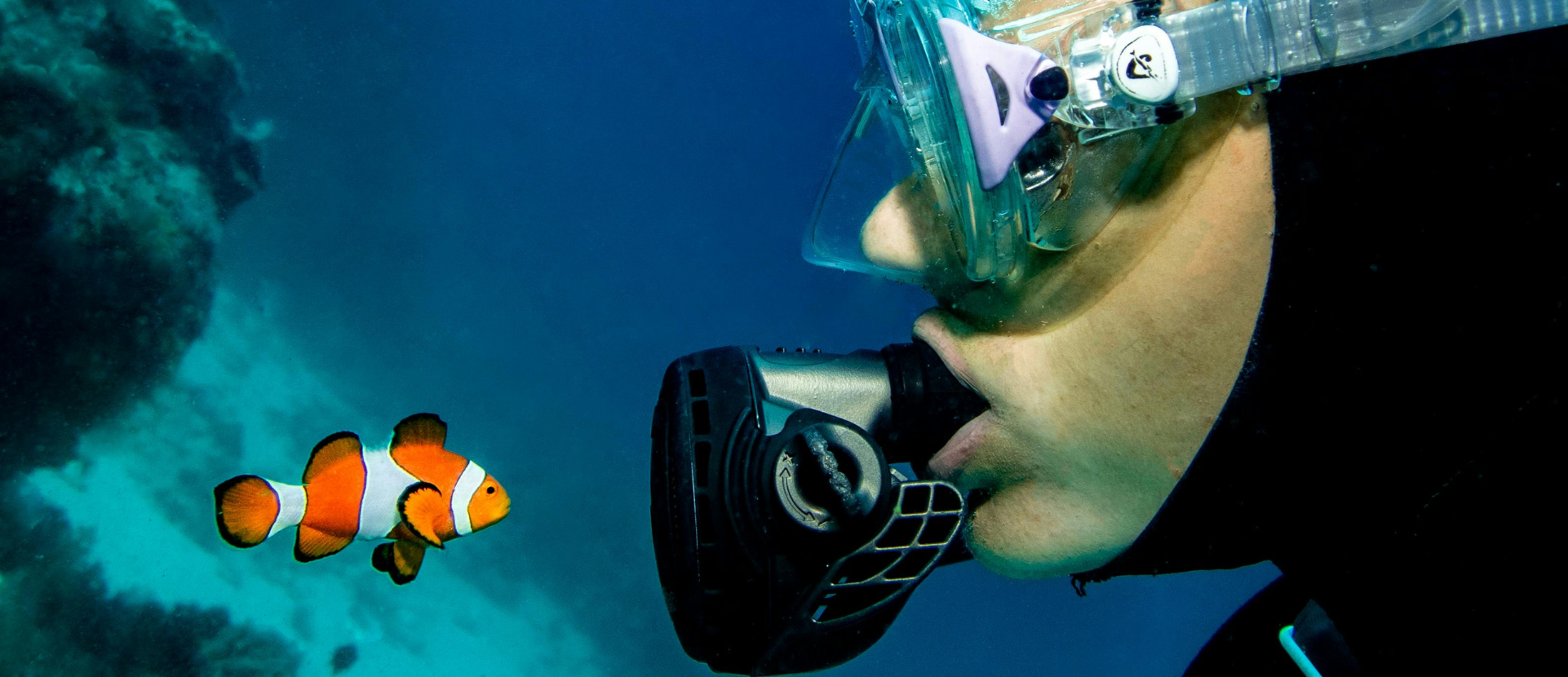- Marine Life Facts
- Science: Explained
Surviving in the Intertidal Zone: The gateway to the Ocean
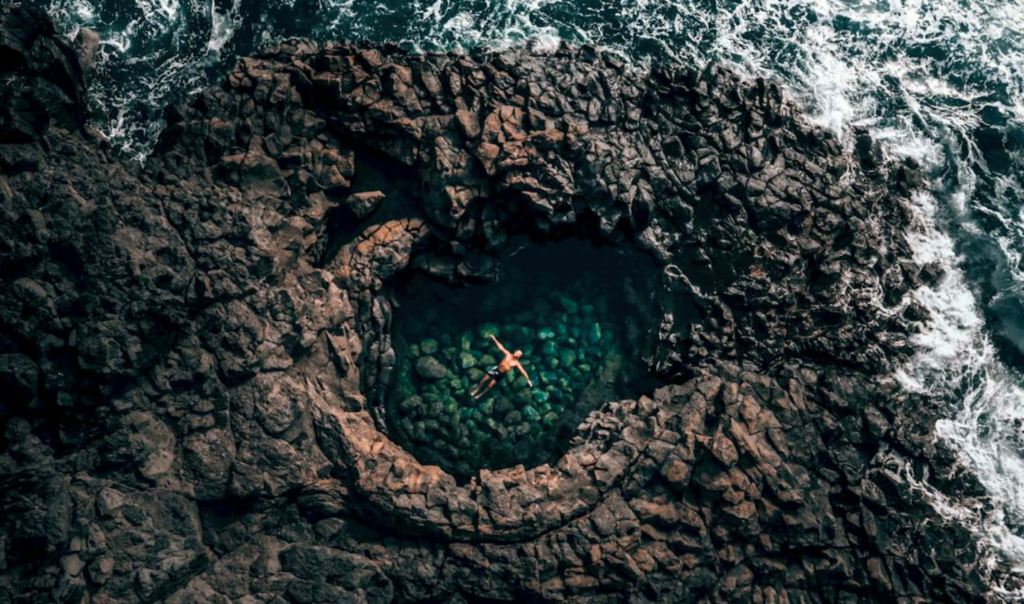
The intertidal zone is the dynamic interface between land and sea, which is constantly shifting and changing with the tide.
This extreme ecosystem is divided into four vertical zones, based on the amount of time each section is submerged. There are the low tide zone, middle tide zone, high tide zone and splash/spray zone.
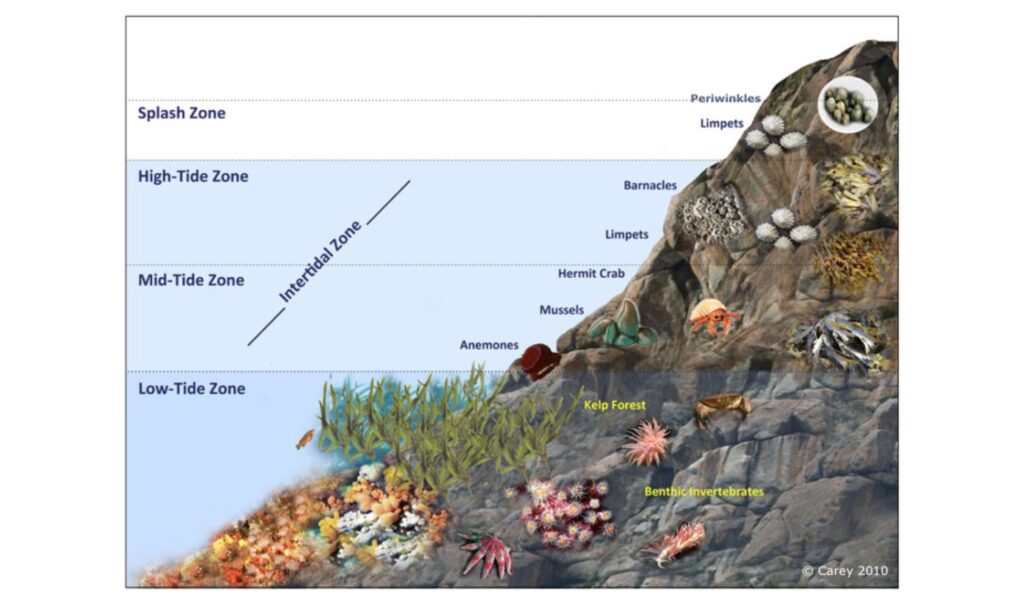
Anything that lives in the intertidal zone must withstand dramatic changes in moisture, temperature, salinity, and wave action.
Marine life and ecosystems respond to these challenges either by short-term, reversible adjustments (phenotypic plasticity), or by long-term adaptations that involve heritable genetic changes (evolution).
Let’s explore the challenges of living in this dynamic environment, and some of the ingenious ways that intertidal animals have adapted to survive here.
Intertidal animals are exposed to air for a large portion of their lives
The drying out effect of air exposure poses a challenge for these animals, and they must find ways to reduce water loss to survive here.
The most common adaptation is to avoid water loss altogether. Intertidal molluscs (like mussels and oysters) retain water within their shells and tightly seal them shut. Others seal off their shell opening with a door-like structure called an operculum (snails do this).
Limpets seal themselves against the hard substrate using suction and produce a mucous layer at this interface to create a watertight seal.
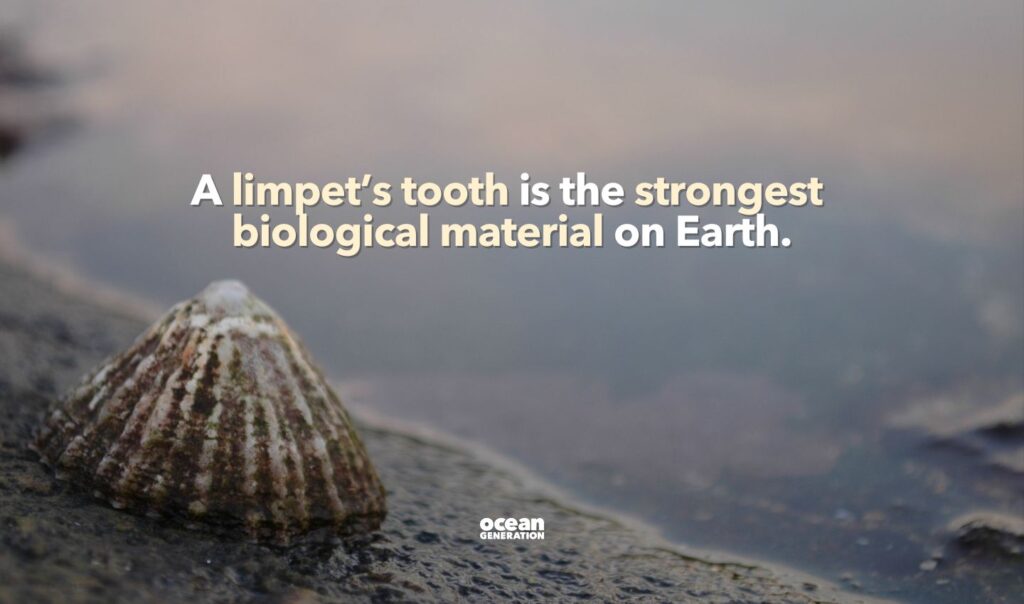
Air exposure leads to greater temperature fluctuations and extremes.
Mobile animals such as crabs avoid the largest temperature changes by shuttling between cooler and warmer environments. This technique is called behavioural thermoregulation.
For less mobile animals, thermal regulation becomes more challenging.
More sensitive animals such as sea stars/ starfish are limited to the low tide zone where they’re more frequently submerged.
Others, such as some species of intertidal mollusc, have evolved internal mechanisms such as heat shock proteins and a high freeze tolerance. These help the animals to cope with extreme temperature variations in the high tide zone.
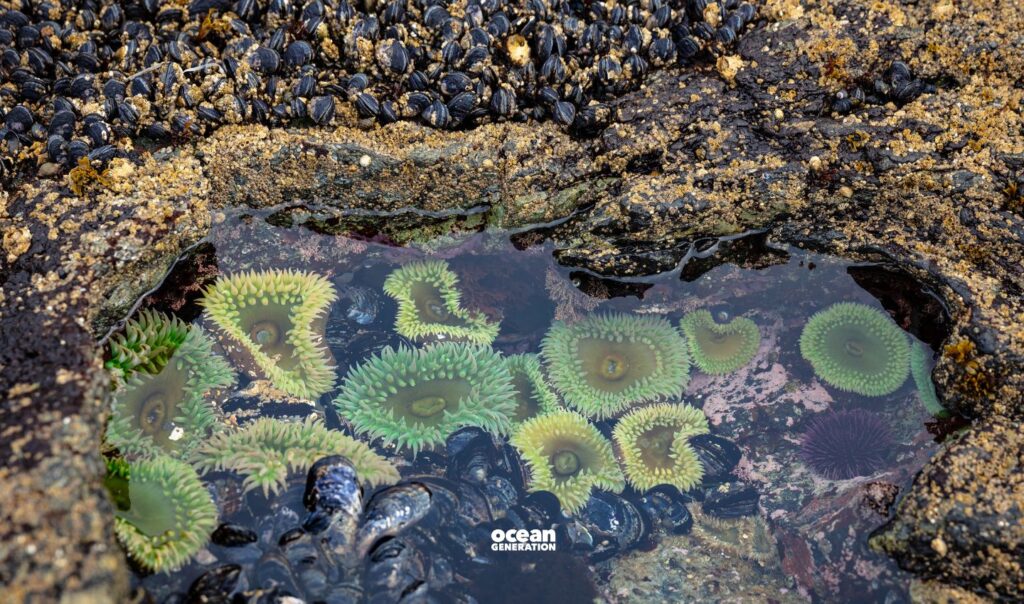
The intertidal zone is characterised by severe changes in oxygen availability.
Particularly in overcrowded tide pools, when many animals are aggregated together during low tide, increased respiration can reduce water oxygen content to critical levels.
In response to this, some intertidal animals can switch to aerial respiration and take in oxygen from air instead of water.
For example, the high intertidal porcelain crab (Petrolisthes) has an aerial gas exchange organ on each of their walking legs for air-breathing during periods of emersion.
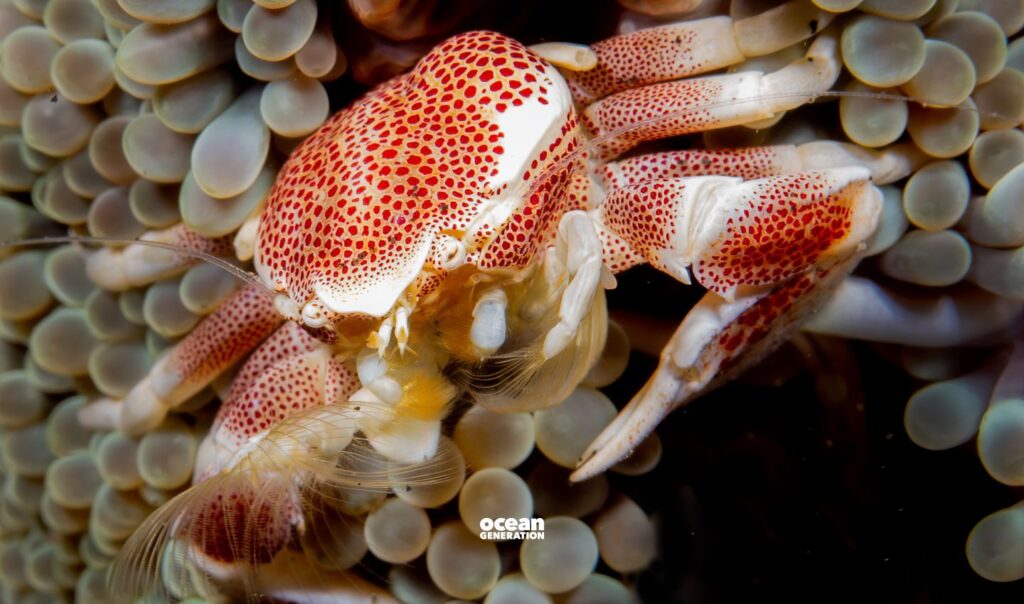
On sandy shores, some species of mudskipper will repeatedly emerge at the surface of their burrows and take in mouthfuls of air. They deposit this air into a specialised chamber within their burrows to protect themselves and their eggs against hypoxic (low oxygen) conditions.
On sandy shores, activities of some intertidal creatures can influence local oxygen availability.
Lugworms burrow deep into the sediment, feeding on organic material in the sand and creating U-shaped burrows deep below the surface. These burrows help to rework and ventilate the sand. This process is known as bioturbation, which increases localised oxygen availability.
They spend their lives filtering out organic material from the sand, pooping out wiggly mounds of undigestible sand to the surface, known as ‘casts’.
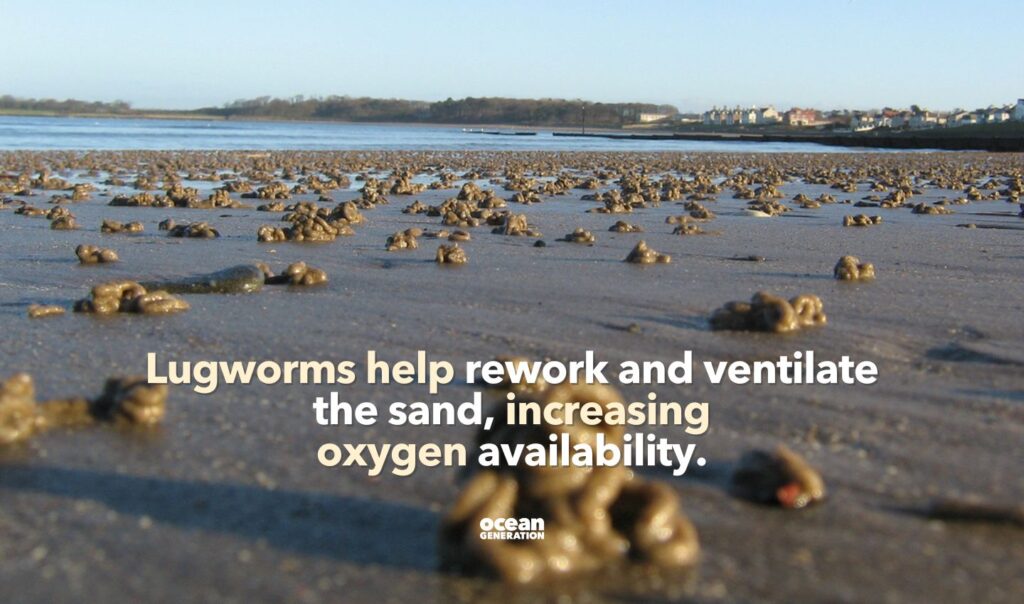
All intertidal habitats are impacted by fluctuations in salinity.
Heavy rain or river inputs can make coastal water fresher, and evaporation and droughts can cause hypersaline (saltier) conditions.
On sandy and muddy shores, intertidal worms move vertically up and down their burrows along a salinity gradient until they reach more favourable conditions.
Other animals maintain their internal osmotic (salt and water) balance in the same way that they protect themselves from water loss. Some clamping to the substrate (limpets); others closing their operculum (snails); or moving to more favourable environments (crabs).
The shallows are exposed to ultraviolet (UV) radiation from the sun.
This can cause DNA mutations and damage to molecules needed for key biological pathways.
To combat this, the aggregating anemone (Anthopleura elegantissima) contracts during peak levels of UV radiation. It attaches debris to its column for extra protection against harmful sun rays: Just like putting on a sunhat.
Other intertidal animals have even evolved ‘sunscreens’. These are absorptive, reflective, or light-scattering pigments in their skin and mucus which help to protect them from the damaging effects of sun exposure.
For example, Irish moss (Chondrus crispus) is the reddish leafy seaweed that can be found on rocky shores and tide pools across the UK and Ireland. If you look closely, you’ll see that it looks slightly iridescent in the light.
This is because the tips of the growing fronds are covered in multiple, transparent layers. When sunlight hits these layers, it’s reflected away from these delicate regions, protecting this alga from harmful UV rays.
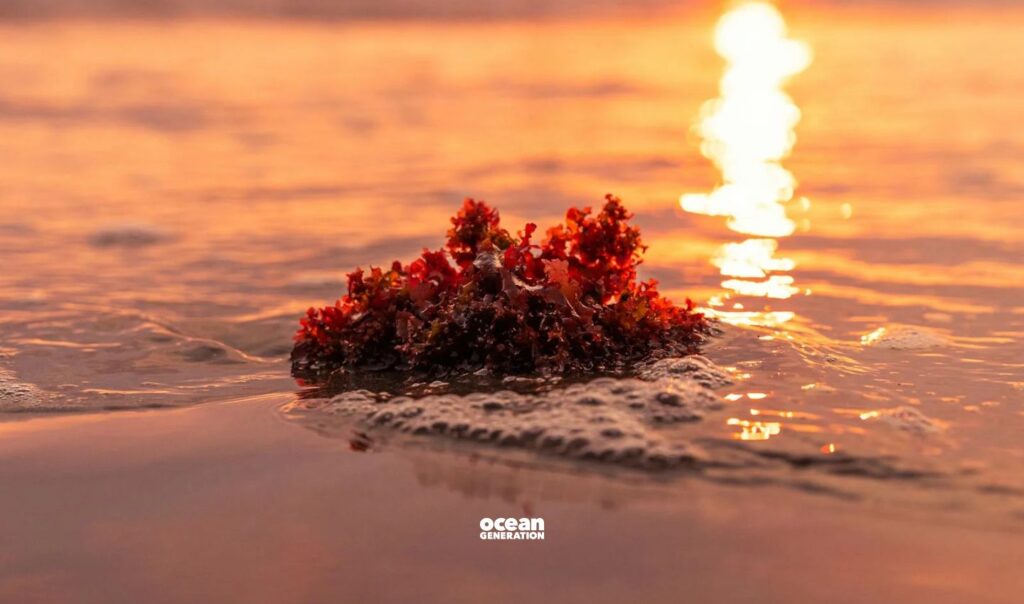
To avoid being swept away by wave action, intertidal animals must hold on tight.
Barnacles secrete cement, while mussels produce a sticky thread called Byssus threads to attach themselves to the rock. Once attached, these sessile animals remain in position for most of their lives.
Other intertidal creatures rely on suction. Sea stars (starfish) have rows of tube feet on their underside. Each of their feet has a sticky, suction cup at its end that help it hold on to the rocky substrate. These also come in useful to prise apart the shells of bivalves to eat.
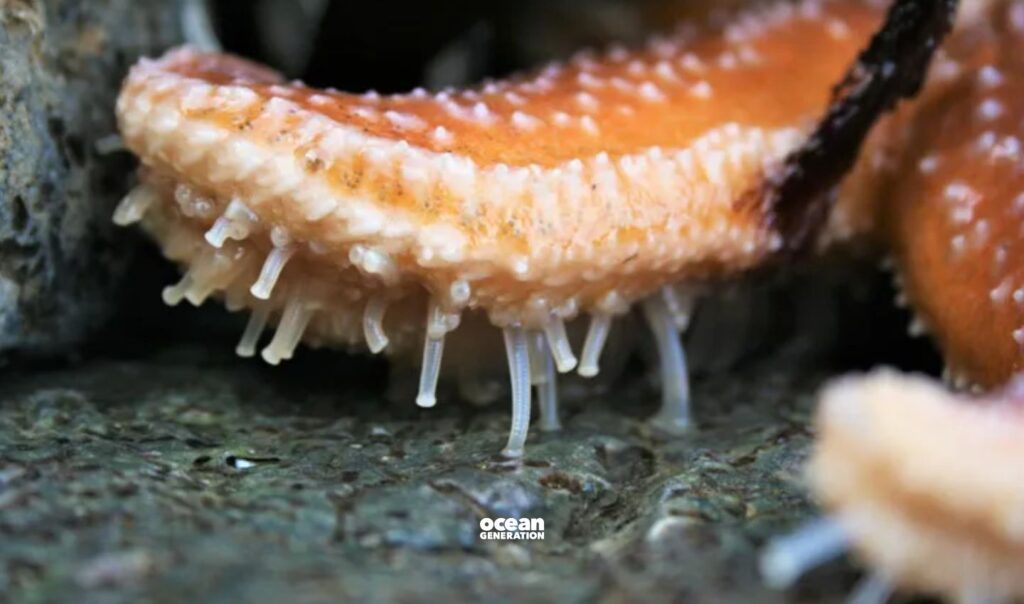
Many adaptations are shared among diverse animal groups.
This is an example of convergent evolution: when similar features independently evolve among different species under the same pressures.
Understanding the challenges overcome by animals living at the interface between land and sea may allow us to better understand our own historical transition from Ocean to land, millions of years ago.
So next time you’re at the coast, see if you can spot some of these creatures and their adaptations. (Remember, they’re under enough stress already, so be respectful and don’t touch, poke or prod at them).
Take a moment to appreciate the incredible feat of survival achieved by the Ocean creatures that not only survive but thrive in this extreme environment.


